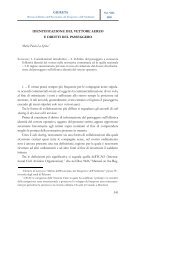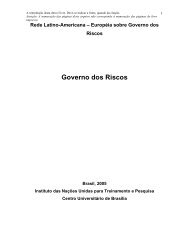Rome II and Tort Conflicts: A Missed Opportunity Abstract Contents
Rome II and Tort Conflicts: A Missed Opportunity Abstract Contents
Rome II and Tort Conflicts: A Missed Opportunity Abstract Contents
Create successful ePaper yourself
Turn your PDF publications into a flip-book with our unique Google optimized e-Paper software.
SYMEON C. SYMEONIDES ROME <strong>II</strong> AND TORT CONFLICTS<br />
<strong>and</strong> the values <strong>and</strong> goals the rule seeks to promote. To simply say that one should look<br />
for a “closer” connection gives courts little meaningful guidance <strong>and</strong> entails the risk<br />
of degenerating into a mechanical counting of physical contacts. This risk is reduced<br />
when the escape is correlated to the overarching principles that permeate the rules,<br />
<strong>and</strong>/or when the escape allows an issue-by-issue evaluation.<br />
For purposes of illustration, not emulation, one can consider the schemes of<br />
the Restatement (Second) <strong>and</strong> the Louisiana codification. The Restatement provides<br />
in Section 6 that the goal of the choice-of-law process is to identify the state that has<br />
the “most significant relationship.” Although literally the quoted phrase appears to<br />
contemplate a determination based on geography, the content of Section 6 negates any<br />
such inference because it lists a series of substantive policies intended to guide this<br />
determination. The subsequent sections of the Restatement provide specific rules,<br />
most of which contain an escape authorizing the judge to apply the law of another<br />
state if “with respect to the particular issue” that state has a more significant<br />
126<br />
relationship “under the principles stated in § 6.” Similarly, Article 3542 of the<br />
Louisiana codification enunciates the general goal of the choice-of-law process for tort<br />
conflicts as one of identifying the state whose policies would be most seriously<br />
impaired if its law were not applied. After establishing specific rules based on that<br />
goal, the codification also provides an escape clause in Article 3547 which authorizes<br />
the judge to apply the law of another state if, “under the principles of Article 3542,”<br />
the policies of that other state “would be more seriously impaired if its law were not<br />
applied to the particular issue.” 127<br />
The italicized phrases signify what is missing from the escape of Article 4(3)<br />
of <strong>Rome</strong> <strong>II</strong>—issue-by-issue evaluation <strong>and</strong> correlation to non-geographical<br />
overarching principles. The only hope comes from a statement in recital 14, which<br />
appears to articulate the philosophy of <strong>Rome</strong> <strong>II</strong> as a whole:<br />
The requirement of legal certainty <strong>and</strong> the need to do justice in<br />
individual cases are essential elements of an area of justice. This<br />
Regulation provides for the connecting factors which are the most<br />
appropriate to achieve these objectives. Therefore, this Regulation<br />
provides for a general rule but also for specific rules <strong>and</strong>, in certain<br />
provisions, for an ‘escape clause’ which allows a departure from these<br />
rules where it is clear from all the circumstances of the case that the<br />
tort/delict is manifestly more closely connected with another country.<br />
This set of rules thus creates a flexible framework of conflict-of-law<br />
rules. Equally, it enables the court seised to treat individual cases in<br />
126. AMERICAN LAW INSTITUTE, RESTATEMENT (SECOND) OF CONFLICT OF LAWS, § 146 (emphasis<br />
added).<br />
127. LA. CIV. CODE ANN. Art. 3547 (emphasis added).<br />
56 AMERICAN JOURNAL OF COMPARATIVE LAW (2008) PAGE 27 OF 46


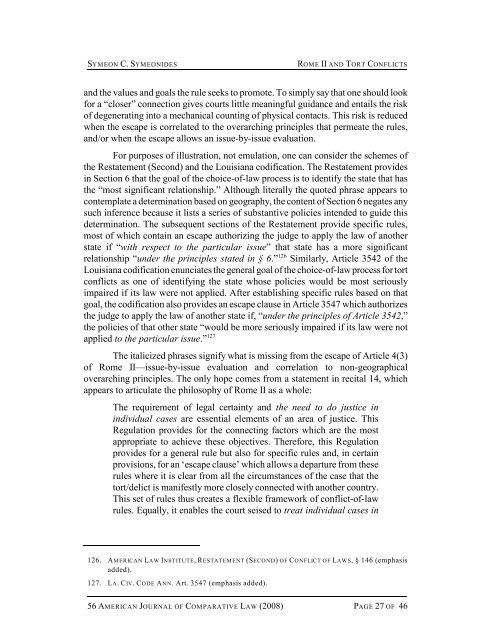
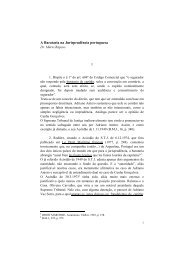

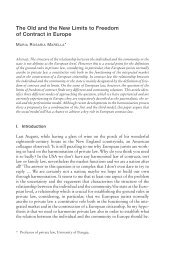

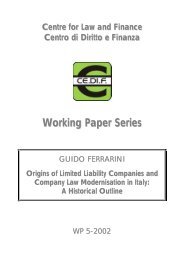
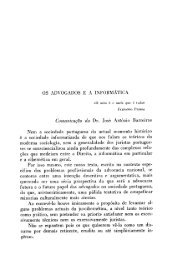
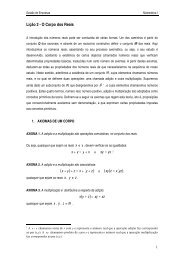
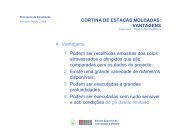
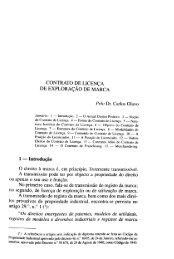
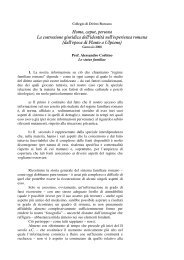
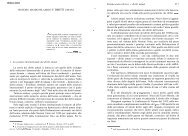

![Luigi Sapio Nozione di islām La parola “islām” [ ] è il mas.dar1 ...](https://img.yumpu.com/15836073/1/185x260/luigi-sapio-nozione-di-islam-la-parola-islam-e-il-masdar1-.jpg?quality=85)
